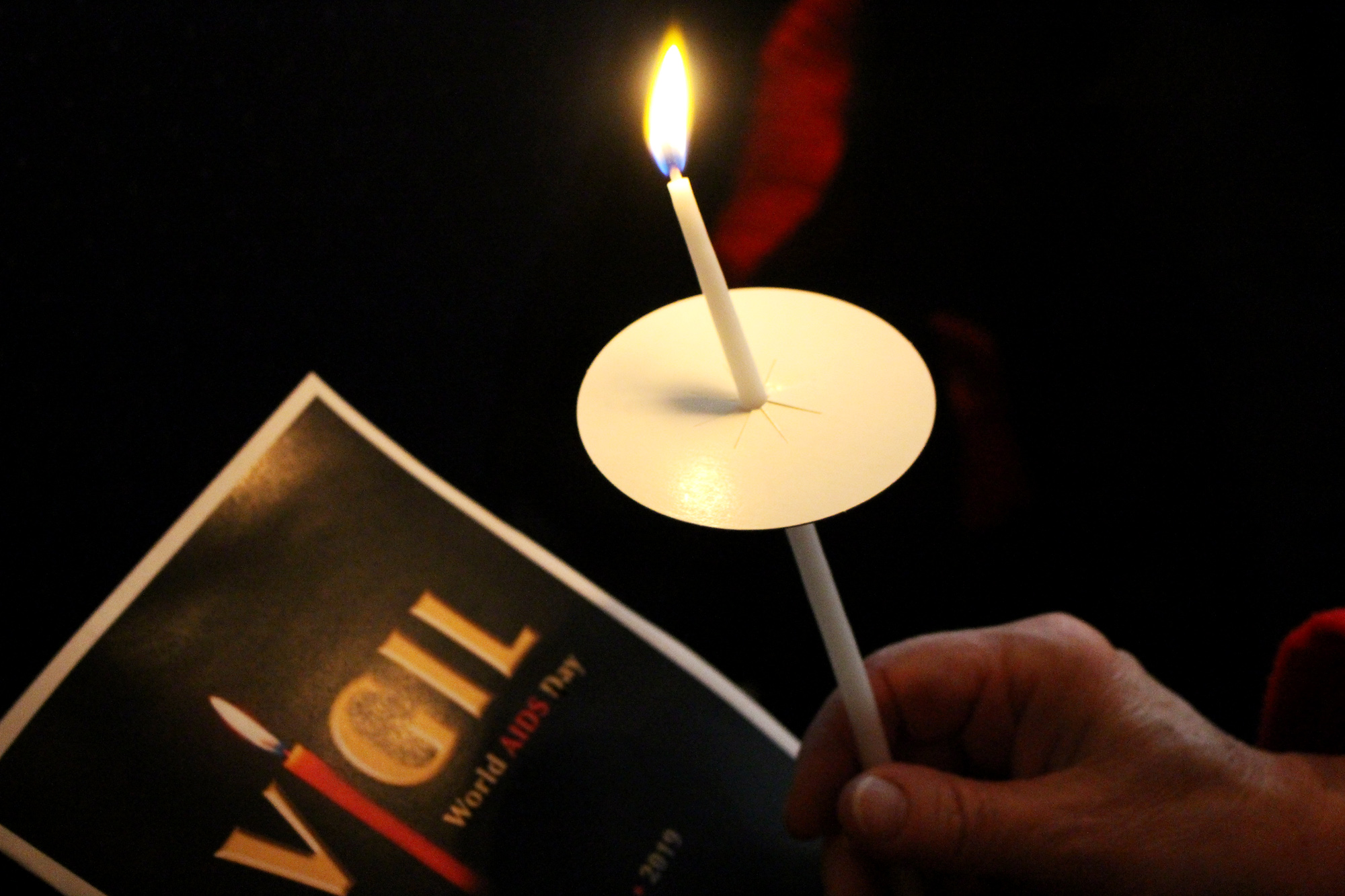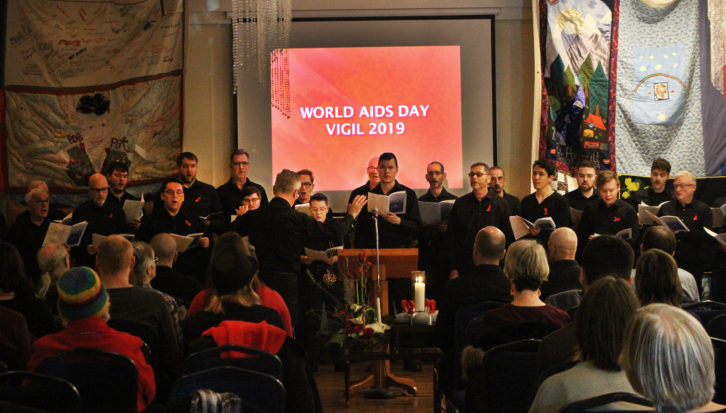World AIDS Day Vigil: Mourning to bring awareness
‘We only make advances if we remember our past,’ says man who lost partner to AIDS

caption
ACNS held its annual World AIDS Day Vigil to remember those who died.Eric Smith wants more people to talk openly about living with HIV, and fewer people to be ashamed of their diagnosis.
Branded with Pride flags and a red ribbon, Smith attended a candlelit vigil Sunday afternoon to honour the friends he lost to AIDS.
“It’s part of my community to remember my partner and all the other people that I have lost,” said Smith.
The annual World AIDS Day Vigil was hosted by the AIDS Coalition of Nova Scotia. Decorated with red ribbons, an international symbol for AIDS awareness, attendees shuffled inside the Italian Cultural Centre. The quiet candlelit vigil marked the end of AIDS Awareness Week. Related stories
To Lori O’Brien, the event organizer, the vigil demands a look into the past to remind individuals of the history of AIDS. It helps people come to terms with the AIDS crisis and mourn peacefully.
“A lot of folks haven’t come to the vigil because it’s such a painful experience to think about those that they’ve lost,” said O’Brien.

caption
In 2019, 18 people have been diagnosed with HIV in Nova Scotia.The chance to honour those who have died was the reason Eric Smith attended Sunday’s vigil. Smith helped organize some of the first AIDS vigils in Nova Scotia.
Smith has been HIV-positive since 1986 and suspects he was infected in 1983. He said he has lost “over 550 friends” to the disease, including his partner.
“We only make advances if we remember our past and if we forget the people gone before us, then it’s going to take away from the issue itself,” said Smith.
Showing up to fight stigma
Smith said the intimate vigil has changed over the years. In 1988, he said, there were over 800 attendees. On Sunday, there were between 50 to 70.
O’Brien suspects the lower turnout is because the event is hard for people who have difficulty dealing with loss.
Smith said that because AIDS is no longer viewed as a crisis in Canada, the event isn’t as publicized as it once was in the late 1980s.
According to ACNS, 18 people were diagnosed with HIV in 2019, bringing the total number of people diagnosed in Nova Scotia to over 890 since 1985. A 2014 review of Nova Scotia’s HIV/AIDS strategy suggests that the actual number of people living with HIV is much higher. The review suggests that stigma around HIV/AIDS actively prevents people from seeking treatment.
“The biggest challenge, of course, remains stigma associated with HIV,” said the coalition’s executive director Dena Simon.

caption
Halifax Gay Men’s Chorus sings at the vigil.Undetectable = Untransmittable
The candlelit vigil also promoted the U=U campaign to encourage people to seek treatment. The campaign seeks to normalize treatment and give people living with HIV hope for a return to a ‘normal’ life.
Started in 2006, the U=U campaign promotes the idea that someone who is HIV-positive and undergoing treatment cannot transmit the disease if it is undetectable in a blood test.
Simon hopes that raising awareness for HIV/AIDS and U=U will help fight stigma surrounding the disease.
“We have the tools to eliminate HIV and AIDS in the next 10 years worldwide,” said Simon during the ceremony. “All we need is the political will to make it happen. We must make it our business to spread the word of U=U.”
For O’Brien, raising awareness is key.
“Even though treatment has improved immensely, we’re still losing people. So, it’s really important to have that awareness,” she said. “We see the vigil as a way to remember but also as a way to start a conversation about HIV/AIDS.”
About the author
Marianne Lassonde
Marianne is a journalism student at the University of King's College. She calls Sherbrooke, Quebec, home. When she is not reporting, she is either...
